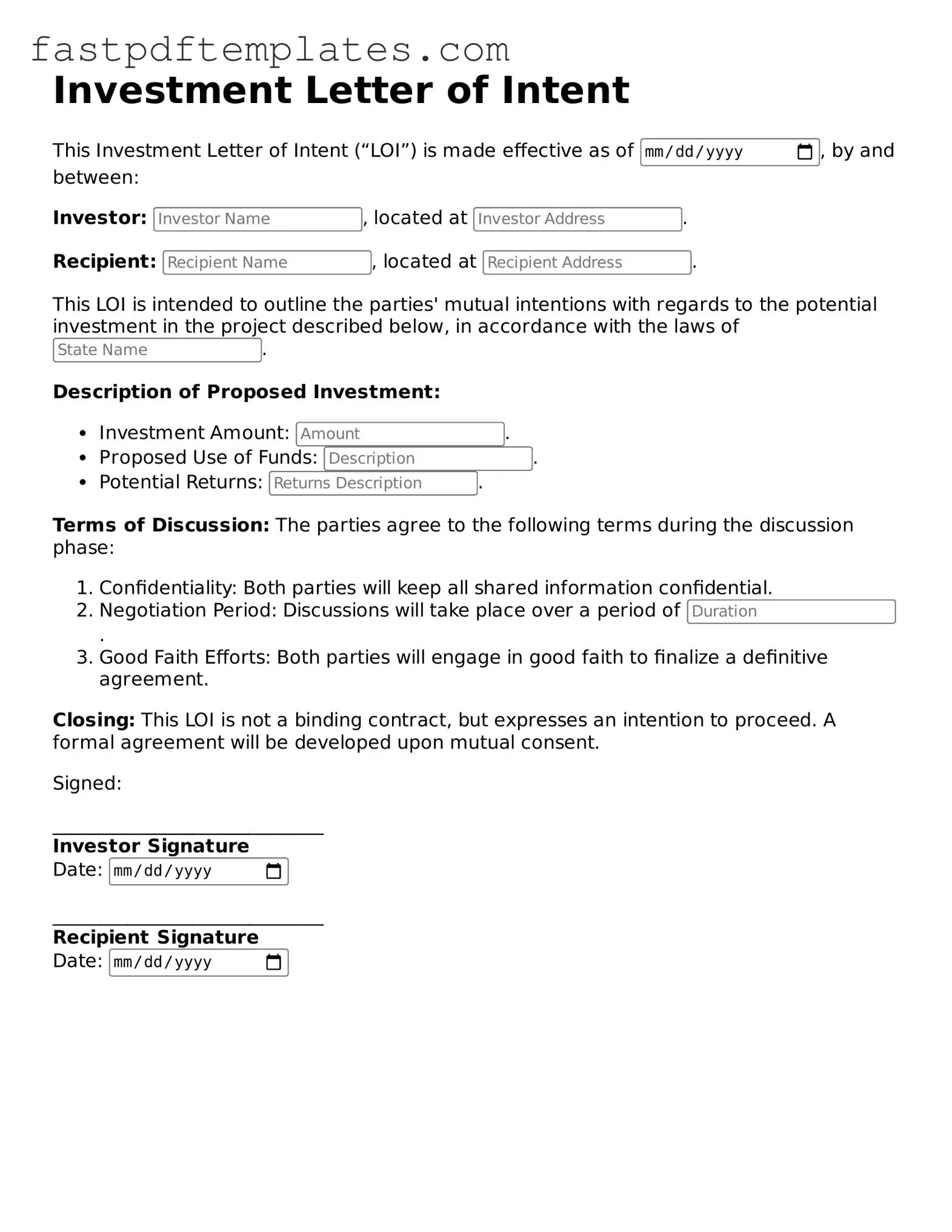Fillable Investment Letter of Intent Document
The Investment Letter of Intent form is a preliminary document that outlines the intentions of an investor to engage in a potential investment. This form serves as a starting point for negotiations, detailing key terms and conditions before formal agreements are drafted. Understanding its purpose and components can streamline the investment process and foster clear communication between parties.
Access Document
